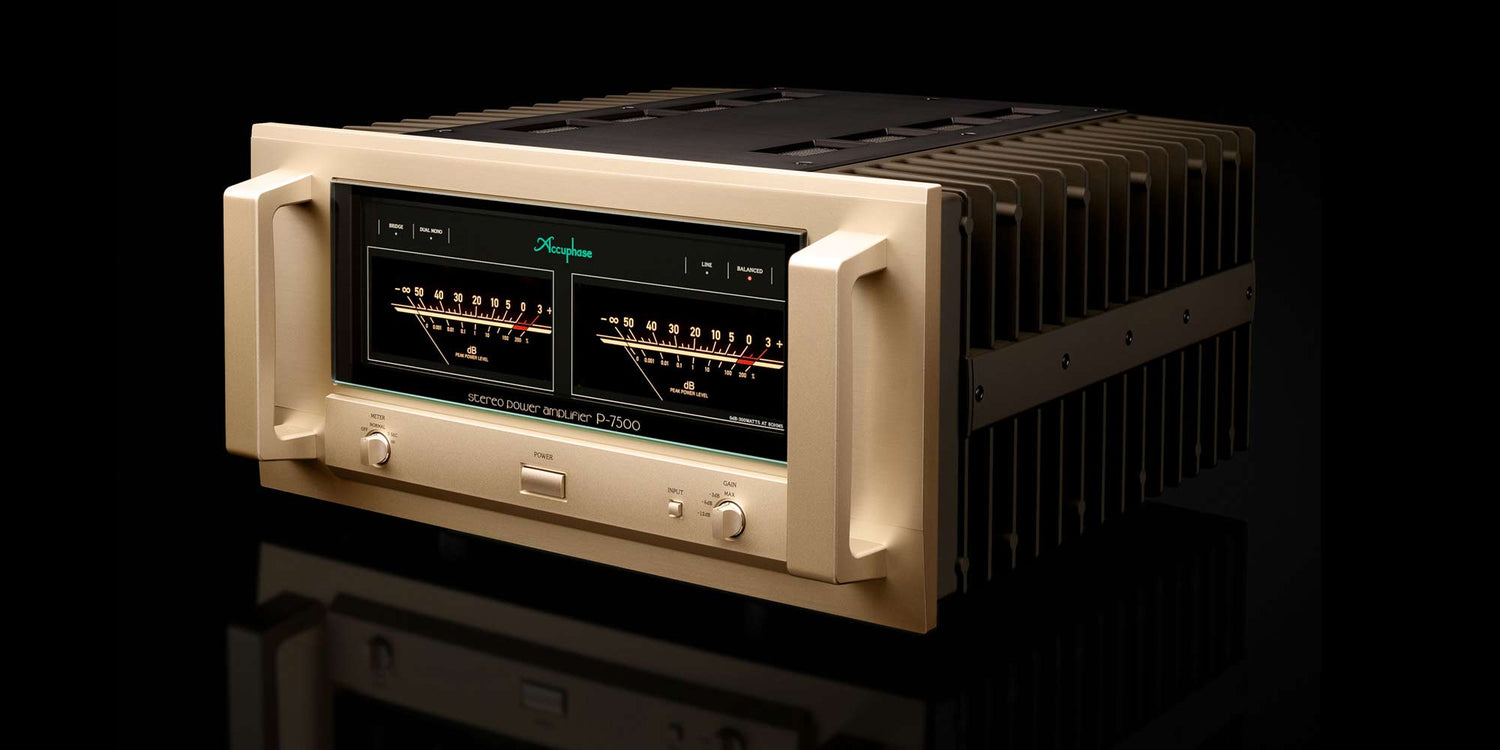
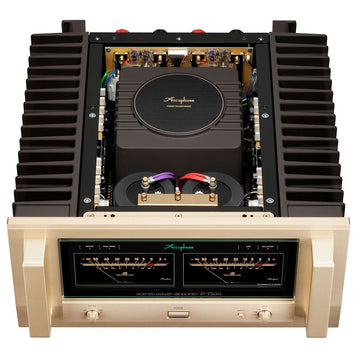
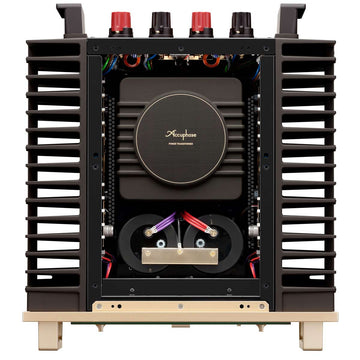
Reviews
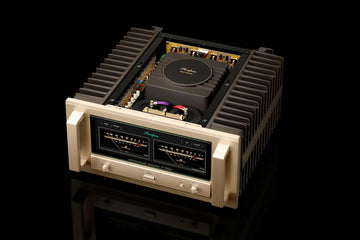
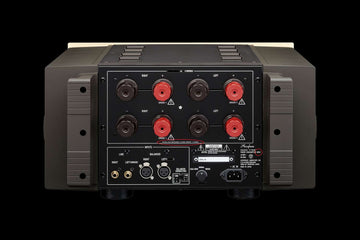
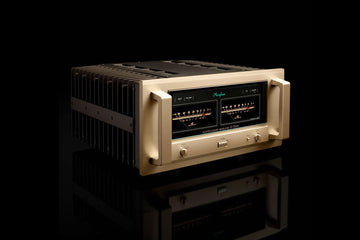

The Accuphase P-7500 Power Amplifier is a high-performance audio component designed to deliver exceptional power, precision, and sonic performance. With its dual mono configuration, AAVA volume control, and high-grade components, the P-7500 ensures exceptional sound quality and reliability. This amplifier is perfect for audiophiles seeking to elevate their listening experience to new heights.
Couldn't load pickup availability
Continuous Average Output Power : Stereo operation - 800 watts per channel into 1 ohm, 500 watts per channel into 2 ohm, 500 watts per channel into 2 ohms, 250 watts per channel into 4 ohms, 125 watts per channel into 8 ohms. Monophonic operation (bridged connection) - 1600 watts into 2 ohms, 1000 watts into 4 ohms, 500 watts into 8 ohms.
Total Harmonic Distortion: Stereo operation - 0.05% with 2 ohm load, 0.03% with 4 to 16 ohm load. Monophonic operation (bridged connection) - 0.05% with 4 to 16 ohm load
Intermodulation Distortion: 0.01%
Frequency Response: At rated output: 20 – 20,000 Hz +0, -0.2 dB. At 1 watt output: 0.5 – 160,000 Hz +0, -3.0 dB
Gain: 28.0 dB (with GAIN selector at MAX) (Stereo and monophonic operation)
Gain Selection: MAX, -3 dB, -6 dB, -12 dB
Output Load impedance: Stereo operation - 2 to 16 ohms. Monophonic operation: 4 to 16 ohms
Damping Factor: 1000
Input Sensitivity (with 8-ohm load, GAIN selector in MAX position): Stereo operation - 1.26 V for rated continuous average output. 0.11 V for 1 watt output. Monophonic operation - 2.52 V for rated continuous average output. 0.11 V for 1 watt output
Input Impedance: Balanced - 40 kilohms. Line - 20 kilohms
Signal-to-Noise Ratio (A-weighted, input shorted): 125 dB (GAIN selector at MAX), 131 dB (GAIN selector at -12 dB) At rated continuous average output
Output Level Meters: -40 dB to +3 dB (indication in dB and %) Logarithmic scale, with defeat switch, hold time switchable 3 s / ∞
Power Requirements: AC 120 V/230 V, 50/60 Hz (Voltage as indicated on rear panel)
Power Consumption: 117 watts idle. 820 watts in accordance with IEC 60065
Maximum Dimensions: Width 465 mm, Height 238 mm, Depth 515 mm
Mass: 48.6 kg net, 58.0 kg in shipping carton





The balanced input stage circuitry features Instrumentation amplifier topology such as used in high-precision measuring equipment. To achieve ultra low noise, the input stage gain is set to a high value, which in turn allows using a high power supply voltage so that distortion at large amplitudes is eliminated. Signal purity is further elevated by the use of ultimate-quality fully discrete components.
Accuphase's original MCS (Multiple Circuit Summing) principle uses a number of identical circuits connected in parallel to achieve superior performance characteristics. MCS+ is a further refined version of this approach, which extends the parallel operation approach to the class-A drive stage of the current/voltage converter, thereby further lowering the noise floor.
Investing in the Accuphase P-7500 is a wise choice for audiophiles who value power and control. This amplifier is designed to deliver a reference-quality listening experience that will satisfy the most discerning ears.
To learn more about the Accuphase P-7500 Power Amplifier or to schedule a demonstration, please contact us.





We use cookies to ensure you get the best experience on our website. By clicking on "Accept all" you consent to our use of cookies. Learn more.
scriptURL:









